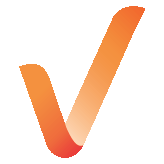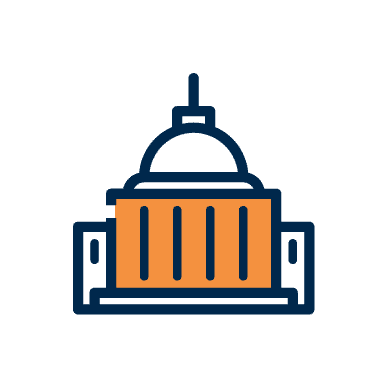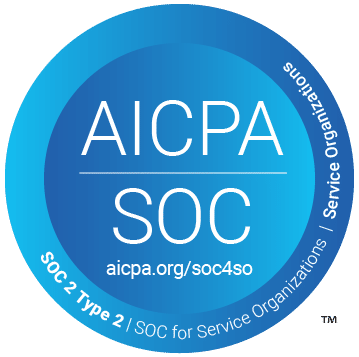OIG Exclusion List FAQS
What is the OIG Exclusion List?
The OIG Exclusion List, which is also known as the “List of Excluded Individuals/ Entities” (LEIE), provides information to the health care industry, patients and the public regarding individuals and entities currently excluded from participation in Medicare, Medicaid and all other Federal health care programs. The OIG Exclusion List is maintained by the Department of Health and Human Services’ Office of Inspector General. Exclusion by the OIG is the most extreme civil sanction that can be imposed by the OIG.
The purpose of the LEIE is both ensure that federal health care program beneficiaries have access to high quality providers and to prevent any federal funds from flowing to individuals or entities who have demonstrated their disregard for the law and high standards of professional conduct.
States are required to submit information about individuals and entities excluded at the state level for criminal convictions and professional misconduct. Upon review, the OIG reviews state submissions and imposes the appropriate exclusions prior to inclusion on the OIG Exclusion List. Most exclusions by the OIG start with a state’s report of a criminal conviction or professional sanction of an individual or entity.
How does an individual or entity end up on the OIG Exclusion List?
Most individuals on the LEIE have been convicted of a felony or misdemeanor related to a federally funded health care program such as Medicare, Medicare and SCHIP. For example, if a provider or vendor intentionally submits an inflated bill for services or falsifies documentation to support higher payment for services rendered to a Medicare patient, that false claim can result in a criminal conviction that leads to federal exclusion.
However, an exclusion can also result from patient abuse or neglect, convictions related to controlled substances as well as lesser offenses such as defaulting on a student loan or revocation, suspension or surrender of a professional license related to professional conduct.
What are the types of OIG exclusions?
There are two types of OIG exclusions – mandatory and permissive.
Mandatory exclusions: OIG is required by law to exclude from participation in all Federal health care programs individuals and entities convicted of the following types of criminal offenses:
- Medicare or Medicaid fraud, as well as any other offenses related to the delivery of items or services under Medicare, Medicaid, SCHIP, or other state health care programs;
- patient abuse or neglect;
- felony convictions for other health care-related fraud, theft, or other financial misconduct; and
- felony convictions relating to unlawful manufacture, distribution, prescription, or dispensing of controlled substances.
Permissive exclusions: OIG has discretion to exclude individuals and entities on a number of grounds, including (but not limited to):
- misdemeanor convictions related to health care fraud other than Medicare or a State health program, fraud in a program (other than a health care program) funded by any Federal, State or local government agency;
- misdemeanor convictions relating to the unlawful manufacture, distribution, prescription, or dispensing of controlled substances;
- suspension, revocation, or surrender of a license to provide health care for reasons bearing on professional competence, professional performance, or financial integrity;
- provision of unnecessary or substandard services;
- submission of false or fraudulent claims to a Federal health care program;
- engaging in unlawful kickback arrangements;
- defaulting on health education loan or scholarship obligations; and
- controlling a sanctioned entity as an owner, officer, or managing employee.
How long does an exclusion last?
It depends on the reason for the exclusion.
For Mandatory Exclusions:
OIG is required by law to exclude individuals and entities convicted of the specific criminal offenses from participation in all Federal health care programs individuals and entities. The minimum exclusion periods are also set by federal law:
- An initial conviction requires exclusion for 5 years.
- Being convicted of a second mandatory offense can result in exclusion for 10 years.
- A third conviction will result in permanent exclusion from Medicare, Medicaid and federal healthcare programs.
For Permissive Exclusions:
The OIG has significant discretion on the grounds for permission exclusion and the duration of exclusion. A permissive exclusion generally lasts between 1 to 3 years. However, for a case that falls under a permissive exclusion, the OIG may impose a different period depending on the severity of the matter.
Where is the OIG Exclusion List located and how frequently is it updated?
The OIG Exclusion List is found on the HHS-OIG Exclusions webpage. The List includes all individuals and entities currently under federal exclusion. The List does not include historical data about providers who were previously excluded. It is updated monthly by the OIG both to reflect newly excluded providers and entities and to remove the names of those whose exclusion periods have elapsed. Because the List is updated monthly, health care organizations should check both potential hires as well as current staff, providers, vendors and volunteers monthly to validate that none are under federal exclusion.
Using the employee or job candidate’s name and date of birth, the databases will return a list of potential matches, including individuals with similar names. The employer must then independently verify whether any of the matches pertain to the employee or candidate in question. The LEIE is just one of the two federal lists which must be checked, in addition to state exclusion lists.
The OIG offers two search options for the LEIE – an online searchable database and the complete downloadable database.
Online Searchable Database
Using the Online Searchable Database, a user can query up to 5 names at a time.
Downloadable Database
If a user is checking many names, using the Downloadable Database in its entirety will give enhanced functionality to search the thousands of names on the List.
What is the impact of being on the OIG exclusion list?
Being excluded from participation in federally funded health care programs effectively eliminates many work opportunities for individuals and entities in the health care field. No payment will be made by any federal health care program, either directly or indirectly, for items or services furnished, ordered or prescribed by any excluded individual or entity. The exclusion applies regardless of who submits the claims. This payment prohibition applies to the excluded person, anyone who employs or contracts with the excluded person, any hospital or other provider for which the excluded person provides services, and anyone else.
Changing roles or locations within the health care industry does not sidestep exclusion. An OIG exclusion follows an individual from state to state and in whichever role taken in the health care field. An excluded provider cannot be employed by any organization that is even remotely connected to health care if it accepts federal funds – this includes hospitals, clinics, social service agencies, long term care facilities, custodial service companies, billing services, healthcare insurers, managed care facilities, and research groups, not even as an unpaid volunteer.
An excluded provider can participate in a concierge model of medicine, where all patients are private pay or in medical practices which do not receive any reimbursement from a federal health care program. Also, an excluded provider can refer a patient to a non-excluded provider as long as the excluded provider does not furnish, order, or prescribe any services for the referred patient, and the non-excluded provider treats the patient and independently bills Federal health care programs for the items or services that he or she provides.
Why is screening the OIG Exclusion List monthly important to health care employers?
Health care providers and organizations which serve federal health care program enrollees have a duty to know if their employees, contractors or potential hires have been excluded from participating in federal health care programs. Since the vast majority of US health care providers and organizations have patients covered under some federally funded program, either directly or indirectly, very few health care entities can risk failing to regularly check for exclusions. Both CMS and state Medicaid contracts expressly prohibit the employment of excluded individuals or entities by health care organizations which receive payment from a government program.
The financial impact of failing to monitor the OIG Exclusion List can be dire. If a health care provider or organization employs or contracts with excluded individuals or entities and bills (or receives capitated payment) for their services or supplies, both federal and state programs will deny payment. Anyone who hires or retains an individual or entity on the OIG Exclusion List may be subject to civil monetary penalties. Submitting claims for services rendered by excluded individuals or entities can also result in heightened OIG or state Medicaid program scrutiny of an organization.
How does an individual or entity remove themselves from the OIG Exclusion List?
Reinstatement: Being on the OIG Exclusion List is not permanent. Upon expiration of the exclusion period, the list will no longer include the excluded individual or entity. However, reinstatement is not automatic; the individual or entity must apply for reinstatement and receive written notice from OIG that reinstatement has been granted.
The OIG provides a reinstatement process whereby an excluded provider may be reinstated and can resume participation in a federal health care program. Providers do not have to wait until the end of their exclusion period to being the reinstatement process – they can apply 90 days prior to the end of the period. However, earlier requests for reinstatement will not be considered.
Appeal of Exclusion: Excluded providers also have the right to appeal their exclusion. Upon receiving a Notice of Exclusion, individuals and entities can choose to contest the decision of HHS OIG. All exclusions implemented by OIG may be appealed to an HHS Administrative Law Judge (ALJ), and any adverse decision may be appealed to the HHS Departmental Appeals Board (DAB). Judicial review in Federal court is also available after a final decision by the DAB. It is not advisable to try to navigate this process without legal counsel who is experienced with this type of appeal process.
Waiver: The OIG has the authority to waive an individual’s exclusion from participation in Federal health care programs. A waiver may only be requested by the administrator of a federal health care program. Excluded individuals or entities may not request a waiver from OIG. Waivers occur very infrequently – currently there are ten (10) waivers nationally.
An excluded individual may be eligible for a waiver only when he or she is the sole community physician or the sole source of essential specialized services in a community AND the exclusion would impose a hardship on beneficiaries of that program. An individual or entity excluded as a result of a conviction related to patient abuse or neglect is not eligible for a waiver.







































